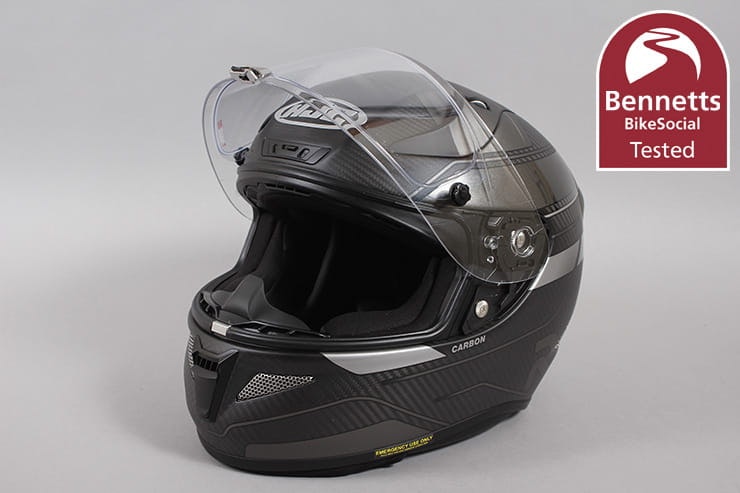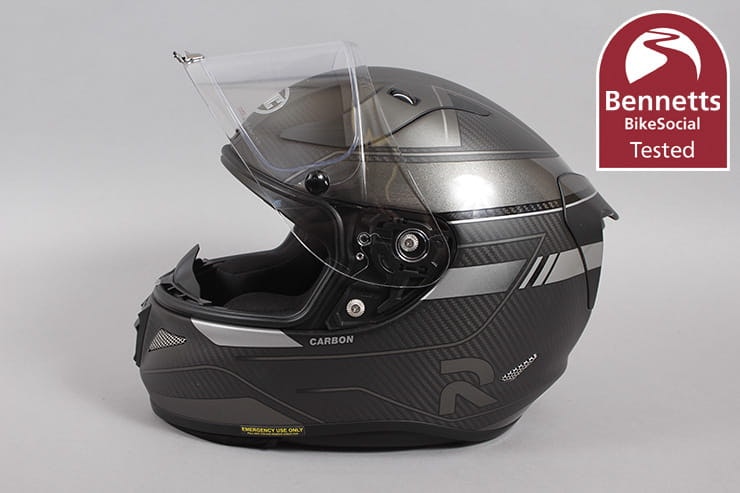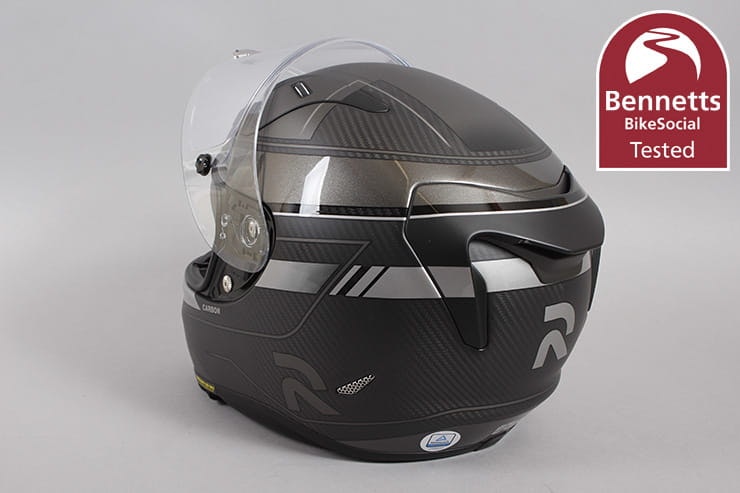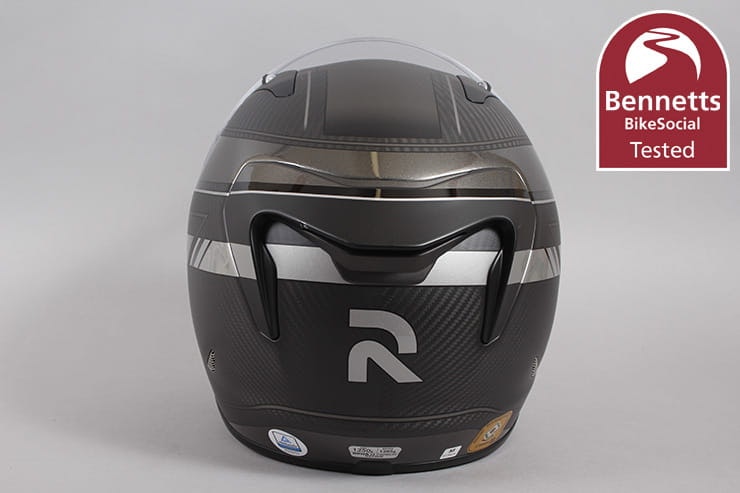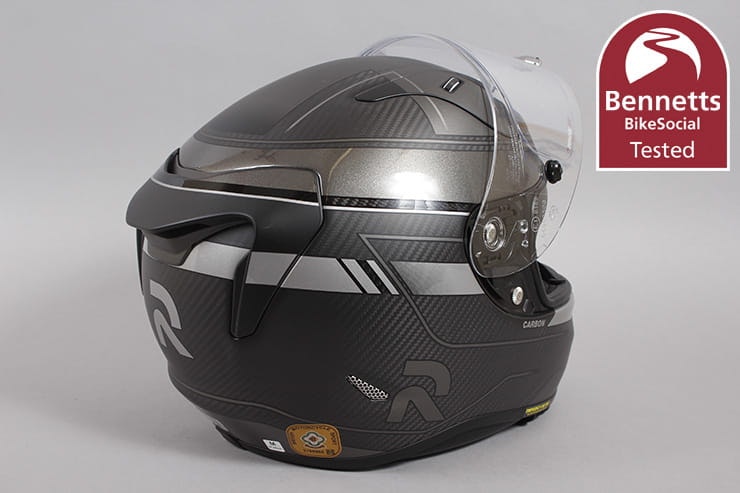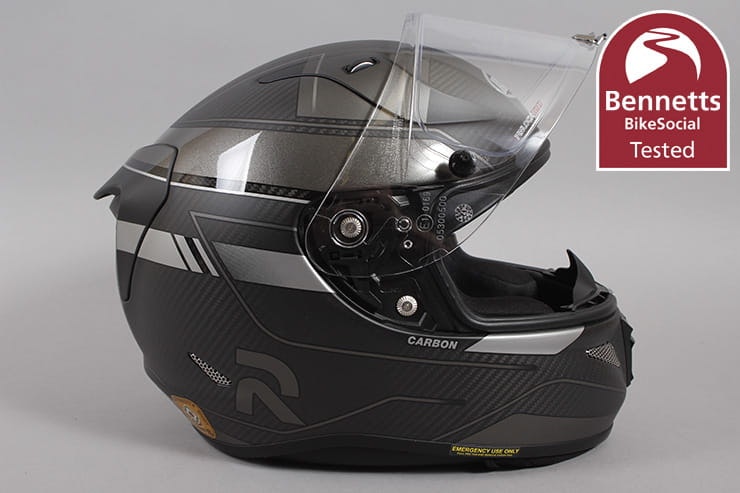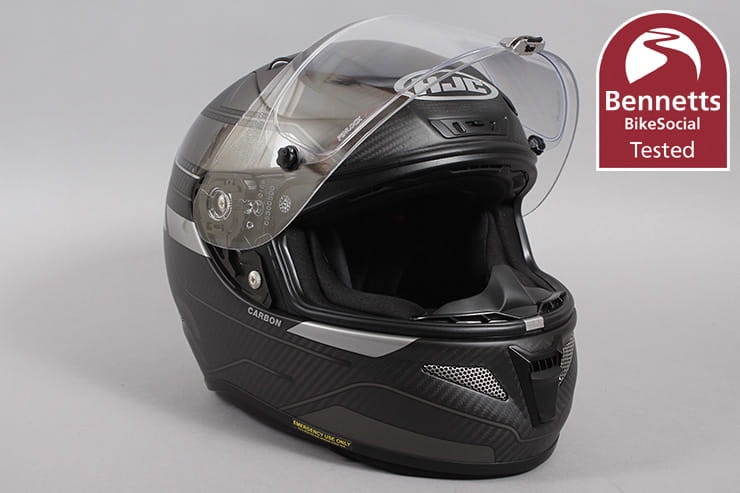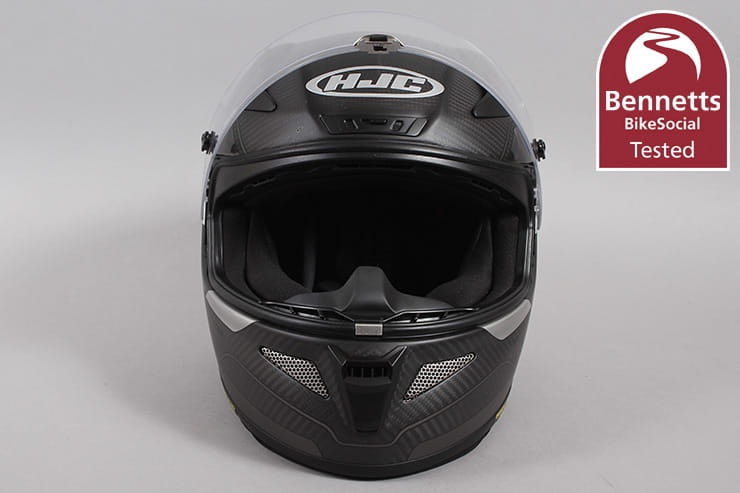Tested: HJC RPHA 11 Carbon motorcycle helmet review
By John Milbank
Consumer Editor of Bennetts BikeSocial
27.04.2021
In case you’re wondering, it means ‘Revolutionary Performance Helmet Advanced’
Date reviewed: April 2020 | Tested by: John Milbank | RRP: From £349.99 | www.oxfordproducts.com
The HJC RPHA 11 is the company’s top-of-the-range sports motorcycle helmet, with a spec and feature list to rival many of its competitors, often costing significantly more.
I’ve been using it on my 1999 Kawasaki ZX-6R and BMW S1000XR for several months to find out if it can compete with the Shoei and Arai rivals…
Superb visor mechanism
Extremely light
Additional smoked visor included
Fiddly D-ring strap clasp
No drop-down sunshield (because it’s a proper sports lid)
Not the best in class for ventilation
The finish is superb
Outer shell
The HJC RPHA 11 range starts with a retail price of £349.99 for plain black or white, going up through £379.99 for graphics to £519.99 for the most elaborate designs. I’m testing the ‘Nakri Carbon, which is available in three graphic styles that overlay the genuine carbon fibre shell for £499.99.
The finish is superb, with a great weave to the carbon and perfectly-applied details. I’m not usually a fan of matte helmets, but here I think it works great, with the gloss highlights picking out wonderfully.
The plastics used on the vents and visor mechanism, the seal and the trim all look and feel of high quality.
The standard version of the RHPA 11 – which has a carbon fibre / aramid / fibreglass construction so would, I’d expect, fare similarly – only achieved three stars of the five possible in SHARP testing, being let down in the side impact tests. This isn’t unique to HJC – there are plenty of its competitors with similar or lower scores in this government-funded scheme, but it’s something to note.
This helmet meets ECE22.05, but there’s no word yet on an ECE22.06 version. It comes with an ACU Gold approval sticker so is accepted for UK racing.
Weight
Claimed to weigh 1,250g, this medium tips the scales at just 1,339g with the visor and pinlock fitted. That’s a fraction less than the Shoei GT Air II (1,350g) and a touch more than the Scorpion EXO-1400 Carbon (1,259g).
Pick it up – especially with or after most other helmets – and it feels very light indeed, though as is always the case, it doesn’t make any obvious difference on the head. The biggest issue I’ve found with neck strain is when a helmet has poor aerodynamics and grabs in the wind as you turn your head. Fortunately, there’s none of that with the RPHA 11.
Ventilation
There’s an open/closed vent on the chin that’s reasonably easy to use once you get the used to it, though there’s no straight-to-mouth venting, which is sometimes found on sportier lids. This is designed to only blow up across the inside of the visor, and as such it doesn’t cause any discomfort on the face or eyes, though its effect isn’t that noticeable for cooling.
Just above the visor is a very small slider that acts as a brow vent – this is really fiddly to use, so you’ll likely leave it open. Until it rains.
The two top vents are rollers, which are extremely easy to use and allow you to fine tune the opening if you wish. These give a very noticeable blast of air at two points on the forehead, thanks to the lining not covering the ports.
Finally, there are four holes inside the shell, a pair feeding the always-open exhaust under the rear wing, and the other pair going out to the two mesh vents on the back.
The ventilation is okay, but it’s not the best out there, the RPHA 11 never really achieving the feeling of air moving all through the lid and out the back when everything’s open. However, where it really does make up for the slightly disappointing vent performance is with the visor…
Visor
I’m not usually that much of a fan of visor ratchet mechanisms – I prefer to be able to set my visor where I want it – but the HJC’s is excellent, not just because the ratchet isn’t as harsh as many, but thanks to the great ‘just-open’ setting.
The RPHA 11’s visor locks down securely with the easy-to-use sprung metal tab in the centre. That means that even when you’re sat at traffic lights with the clutch held in, it’s easy to pop this open with your right hand.
From there, the visor sits open by about 5mm, which is ideal for town riding, or on more open roads when it’s really hot (or you’re struggling with fogged spectacles).
The next step in the ratchet gives a useful couple of centimetres of gap, then it’s four more smooth notches to fully open.
Popping the visor off and putting it back on is incredibly quick and easy; honestly, I’d say it’s the best I’ve ever used. There’s a top-of-the-range Pinlock MaxVision 120 anti-fog insert supplied, as well as a legal (so not as dark as it could be) additional smoked visor.
Both visors are two-dimensional, meaning they’re flat in the vertical plane, and do include tear-off posts. Realistically, very few owners will ever use tear-offs, so it’s a shame the posts interfere a touch with peripheral vision when performing a shoulder check. Overall, the angle of view is fine for road use, but it’s not got quite the widest aperture of some other, even sport-focussed lids.
What does help the view – at least when laying over a sports-bike’s tank – is the lack of a drop-down sunshield, which keeps the padding around the brow as slim as possible.
This isn’t a touring lid, so the omission of a blast sun shield shouldn’t be surprising. It doesn’t really bother me as I don’t tend to like the distracting light they leak around the cheeks and nose, but note also that a sports lid doesn’t tend to have quite as good a field of view downwards as a touring lid. Be realistic about what you need, and perhaps consider the HJC RPHA 70 if you’re more of a road than track rider.
I’ve never felt the need to lock this tiny catch
There is one quirk of this visor, and it’s the tiny little black plastic slider on the front of the catch. Push it to the left (while it’s on your head) and it locks the visor shut. You can beat it, but it makes it a lot harder to open and close. There’s no chance of accidentally knocking this, so I’d just suggest leaving it slid to the right.
The action and ease of removal of the visor makes it one of the best I’ve used – I still prefer the ‘infinite adjustability’ of an Arai, but that’s a real pain to open with the right hand, and although I have no problem with the Arai’s visor removal, I know some people do. The HJC is closer in action to a Shoei visor, but I prefer the smoother movement of this HJC, and the slightly easier removal and refitting.
Finally, a while back there were forum grumbles of cracks forming in the visor around the screws that keep the latch in place. This genuinely is down to using the wrong cleaning products (and I didn’t get this from HJC as an excuse); some products can severely affect polycarbonate, so I’d always recommend using nothing more than a mild soap solution, like baby shampoo. You can find out more about harmful cleaners here.
Lining
The lining is fully removable and it’s easy to do so, while also being soft and comfortable with an anti-bacterial and moisture-wicking fabric.
The cheek-pads have easy-to-spot emergency tabs that mean they can be pulled out and the helmet removed without disturbing an injured rider’s neck.
The rear of the neck skirt also has a couple of reflective panels built in for additional safety.
The inside of the helmet has removable inserts for a microphone and intercom speakers, though these apertures are a little small. The larger JBL units fitted to the top-end Cardos, for instance, are tight to cram in so check with your system to be sure.
While you can use your own intercom, there is a blanking plate on the bottom of the rear of the RPHA 11 to user the company’s ‘Smart Bluetooth’ units.
Fastening
In keeping with this being a sports-focussed lid, there’s a double-D fastener on the strap. While you get the knack, this is one of the more fiddly ones I’ve used thanks to a small aperture on the top ring and right-angle edges, rather than rounded.
It’s easy to get the strap undone, but I just think the anodised aluminium clasps could have been a little better thought out to make it easier to do up.
Fit
Fit is entirely subjective, but for reference I find Arai and Shoei both fit me perfectly, while Schuberth tends to come up a little small and only half the Shark range is compatible with my head.
I find the HJC RPHA 11 to be quite tight around the cheeks, though it’s not to the point of discomfort, and overall the helmet fits me well with none of the pressure points that are so important to check for when trying any helmet of any value on.
Noise
The RPHA 11 is a pretty average helmet when it comes to noise. On the ZX-6R your head is generally in the wind when riding on the road, and there it’s not too bad. On the S1000XR the fairing introduces some turbulence that makes it a bit noisier, but in both cases it’s not really much better or worse than other sport lids. Basically, as with all helmets you do still need earplugs.
HJC RPHA 11 Nakri Carbon helmet review: Verdict
While nudging well into the upper price bracket, the HJC RPHA 11 Nakri Carbon is a full-carbon fibre helmet that’s very light, comfortable and has an outstanding visor mechanism.
Whether this is the best lid for you will depend – like any – on how well it fits, but my main reservation just comes from the fact that it’s not got the best in class ventilation; that benchmark has been set very high by the new Arai Quantic, but that’s £500 in plain colours (£600 with graphics), and it’s getting on for half a kilo heavier.
With street prices under £300 at the time of writing for some plain (and last-season) colours, the RPHA 11 can offer good value for money. Though not without its quirks, it’s one to have on your shortlist when shopping for a new lid.
